When trying to live a healthier, from scratch lifestyle, there are certain ingredients that just aren’t great for our health. The good news is, you have options! Here are the 13 items I’ve swapped out for healthier options that have changed my life.
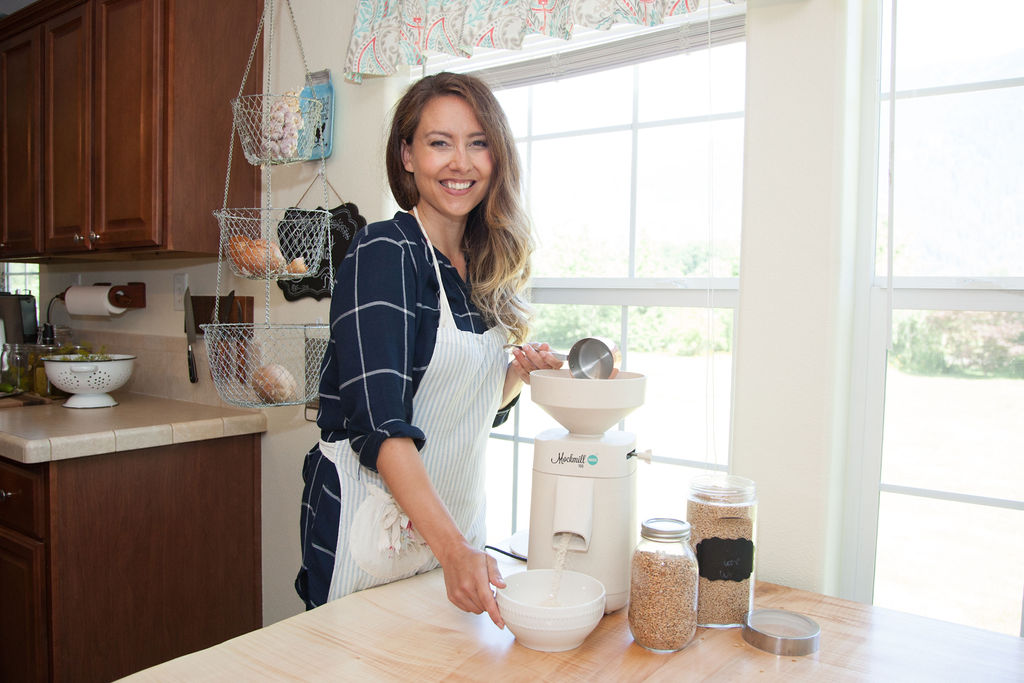
Making healthy ingredients swaps isn’t always the easiest thing to do, especially if you don’t necessarily know what foods are healthy and what foods aren’t.
🍞 Struggling With Sourdough?
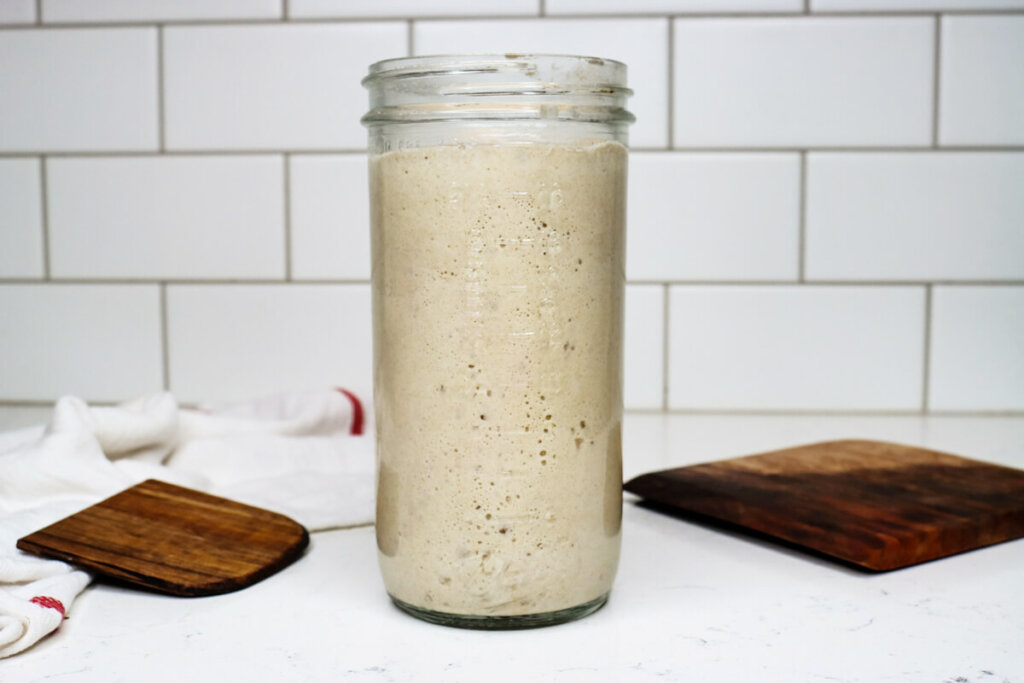
If your starter won’t take off, your loaves are dense and hard, or sourdough just flat-out overwhelms you…
👉 I’ll show you how to fix all of it.
Join my FREE live workshop and learn how to make a bubbly, active starter—the right way, from Day One.
🗓️ Jan 12 @ 1pm PT
Natural Remedies Made Simple
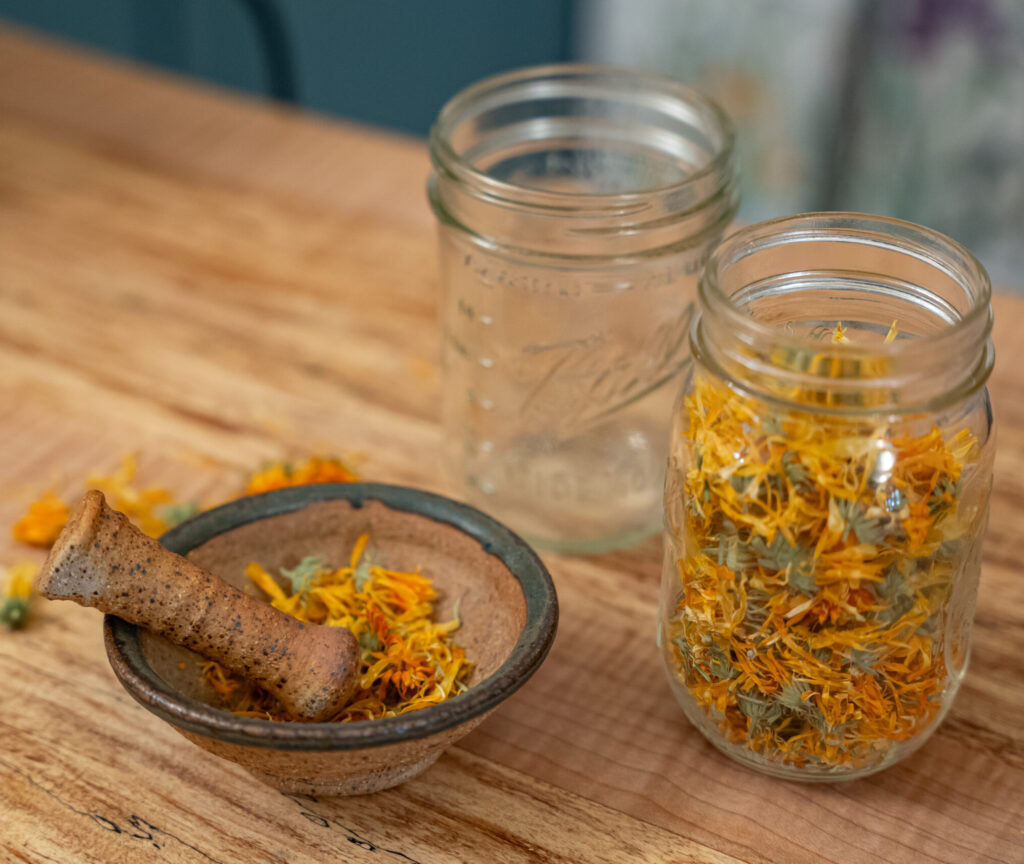
Start your home apothecary with confidence—even if you’re brand new. Learn how to choose the right herbs for your body using the simple principles of herbal energetics.
Discover how warming, cooling, drying, and moistening herbs affect your body—so you can stop guessing and start making remedies that actually work.
My journey to healing my stomach acid naturally, plus knowing how to find my trigger foods has been going on for well over a decade now, and I’ve learned a few short cuts when it comes to getting healthy ingredients in the home without any overwhelm, or even breaking the bank.
It’s amazing what happens to your body when you eat healthily, but sometimes healthy alternatives just aren’t readily available in the grocery stores and we need a “from scratch” method.
Below I’m listing the ingredient swaps I’ve made in my life that have had the biggest impact on my health (here’s my health update). In fact, I’m willing to say these swaps, along with other homesteading practices, have saved my life.
It’s important to note that I am not a certified medical practitioner. This post is not intended to diagnose or treat but is for informational purposes only. Please contact your healthcare professional before introducing new herbal and natural remedies into your wellness routine.
Table of Contents[Hide][Show]
Fats & Oils
The first thing I wanted to do when changing my food was to eliminate any highly genetically modified crops (GMO), so my first stop was to look at the oils I use in cooking.
This meant cutting out any products that used soybean oil, canola oil, or other hydrogenated oils like Crisco shortening. Instead, I swapped these out with healthier options.
My beloved Crisco was swapped out with unrefined organic coconut oil. It works just the same as Crisco would in any recipe, but it’s much healthier. The organic unrefined coconut oil that I buy does have a slight coconut flavor, if you don’t like the flavor of coconut, you can buy a refined coconut oil instead as it has no coconut flavor but is a bit more processed.
I also love using real butter. Yes, slathered on homemade bread and used in my baked goods, real butter is delicious! I only buy organic butter from grass-fed cows because, if it’s not filled with good quality vitamins, then I’m not spending my money on it.
My other fat of choice is lard, which you can easily render and make homemade lard. In fact, lard and butter when used together make the very best flaky pie crust recipe ever.
When it comes to cakes, muffins, and quick bread, I love using melted butter, but if I don’t want to use butter, I love using avocado oil. Avocado oil has a high smoke point (500 degrees) so it also works well for roasting vegetables.
However, for my vegetables, I actually love the delicious flavor that organic extra virgin olive oil adds. This is also a great oil to use in homemade salad dressings. (Or try making this homemade buttermilk ranch dressing.)
By stocking these high-quality healthy fats and oils and using them anytime I’m cooking or baking, I have eliminated a lot of genetically modified ingredients from my daily life.
Pantry Staples
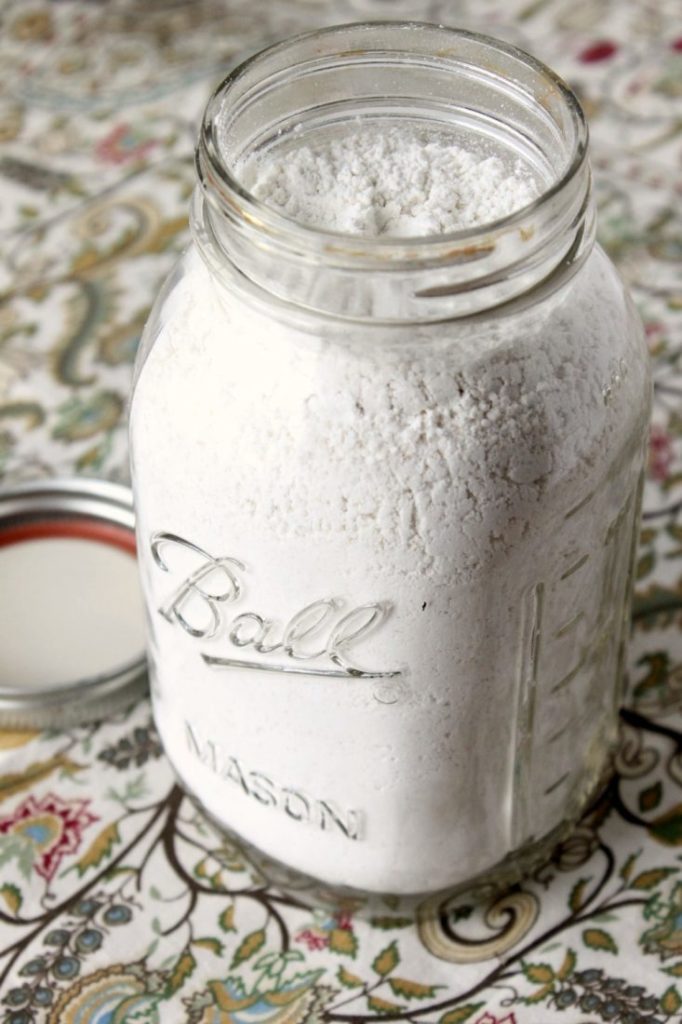
I used to use a lot of boxed mixes in my home, and because I was adding ingredients like oil, water, and an egg, I felt like I was baking from scratch. I now realize that’s not actually what our grandparents used to do when they would bake from scratch.
Unfortunately, many boxed mixes are processed foods made with very unhealthy ingredients, and by just keeping a few basic pantry staples, I’m able to make all those items I used to make with a boxed mix from scratch. (Source)
Check out these homemade boxed mixes you can actually make from scratch and keep in your pantry for quick and easy convenience foods. (They also happen to make great gifts!)
I don’t buy everything organic, but I do prioritize what I buy organic based on the Environmental Working Group’s Dirty Dozen list. The Dirty Dozen is a list of fruits and vegetables that have tested highest for pesticide residue. (Also great is EWG’s “Clean 15” list of fruits and veggies that test lowest for pesticide residue. These items I tend not to buy organic to save money.)
Subscribe to Melissa K. Norris!
Get updates on the latest posts and more from Melissa K. Norris straight to your inbox.
We use your personal data for interest-based advertising, as outlined in our Privacy Notice.
Flour
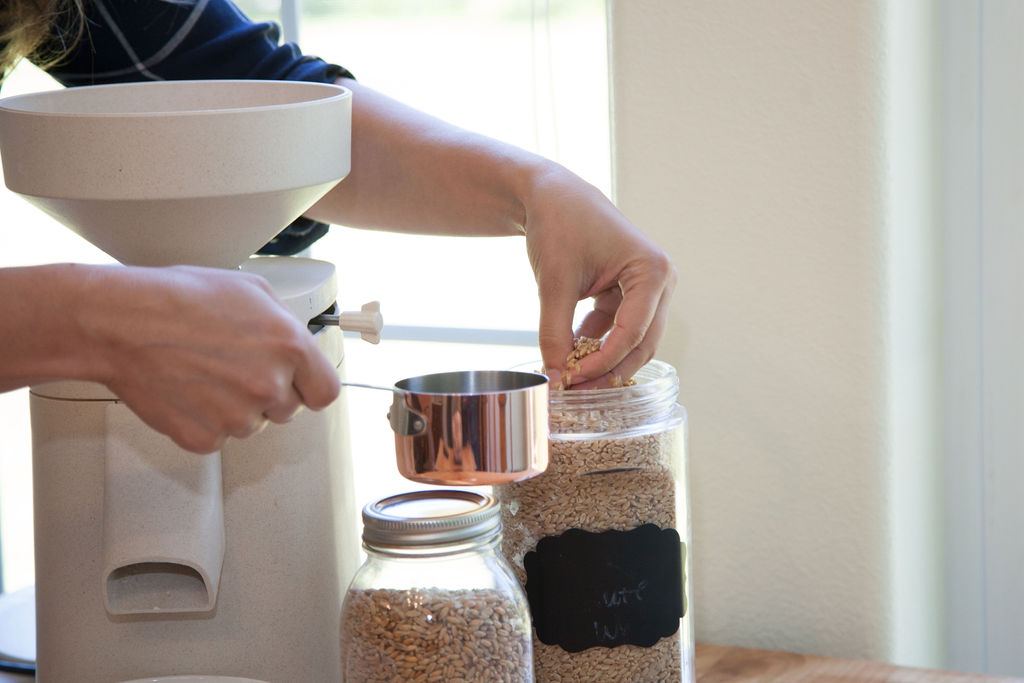
Wheat, which is where flour comes from, is a highly sprayed pesticide crop so I want to be sure to lower that load in my everyday life. An easy switch for flour is to buy an organic, unbleached all-purpose flour.
Buying organic, unbleached flour is an easy 1 to 1 swap out that you can use whenever a recipe calls for white flour.
Sugar
Sugar is usually made from sugar beets which are almost always genetically modified. White sugar was another simple swap I was able to make for organic evaporated cane juice. This is an organic sugar that comes from sugar cane instead of sugar beets.
It goes without saying, but too much sugar in your diet just isn’t healthy. So it’s always a smart decision to watch your sugar consumption. (Source)
I love using dates instead of sugar (like in Grandmother’s Date Bread) because, in addition to their sweetness, they provide fiber, prebiotics, calcium, antioxidants, vitamins, and magnesium. What other sweetener in your pantry contains all of that?
Home-Milled Flour
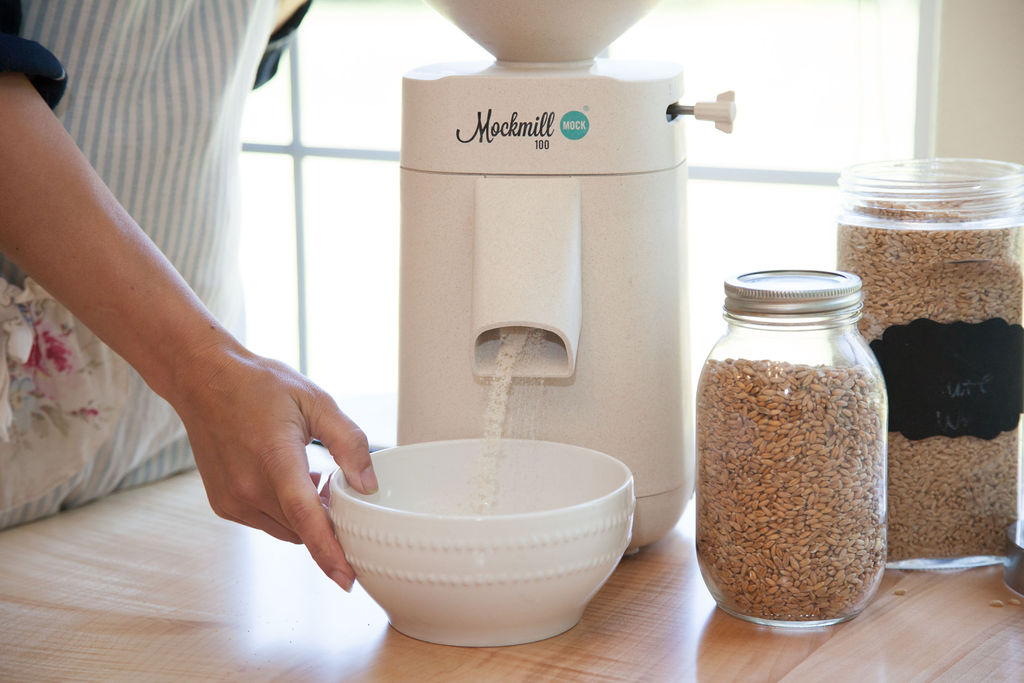
The further I went down the healthy food rabbit hole, the more I realized I wanted to grind my own fresh flour for use in baked goods.
There is a bit of a learning curve when grinding your own flour, everything from what wheat to use when grinding your own flour depending on what you’re baking, how much to grind for your recipes, what mill is best for grinding flour, and even how to use your grain mill for the correct settings based on your baking needs.
Store-Bought Bread
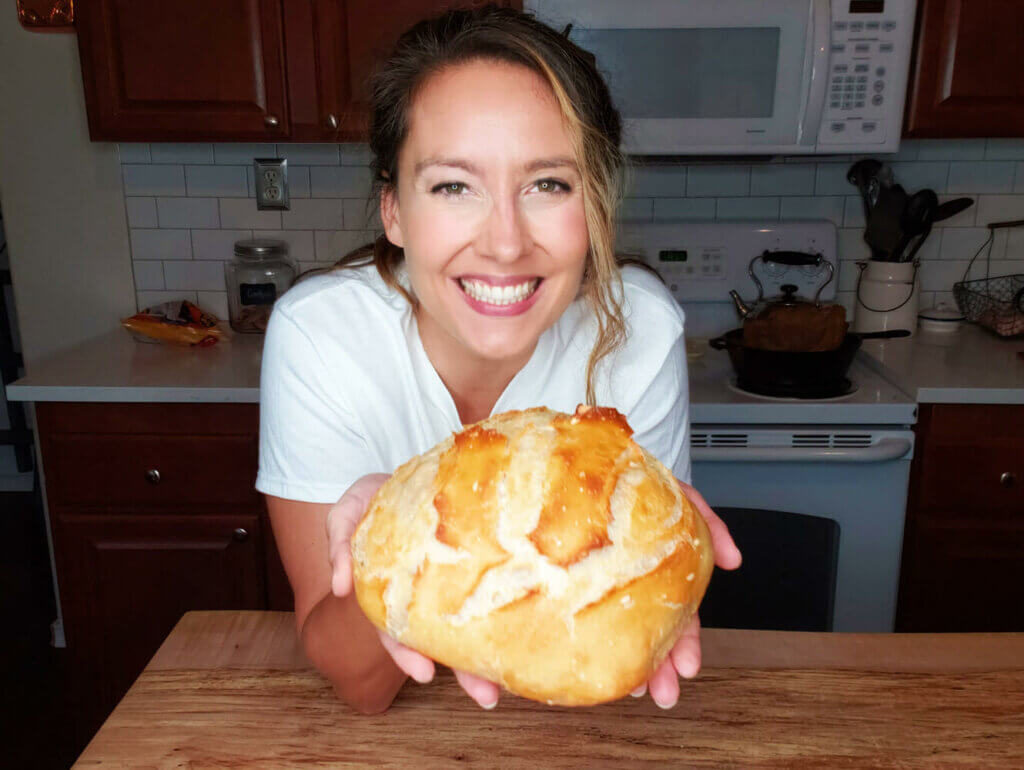
Once I started baking more of my own food from scratch, it naturally led me to bake my own bread. To find a loaf of bread that met my standards at the grocery store (no caramel coloring or food dye, no high fructose corn syrup or hydrogenated oils, etc.) and that was also organic, made buying bread cost-prohibitive.
Since then I have how to bake sourdough bread. I learned to make a sourdough starter, how to reconstitute a dehydrated starter, and how to bake the best beginner homemade sourdough sandwich bread, plus other sourdough goodies like chocolate sourdough quick bread.
I also love making this 5-minute no knead homemade artisan bread (pictured above), because you whip up the dough one day, then let it sit in the refrigerator until you’re ready to bake. With just five minutes of hands-on time, you’ll have a beautiful and delicious loaf of bread.
Beverages
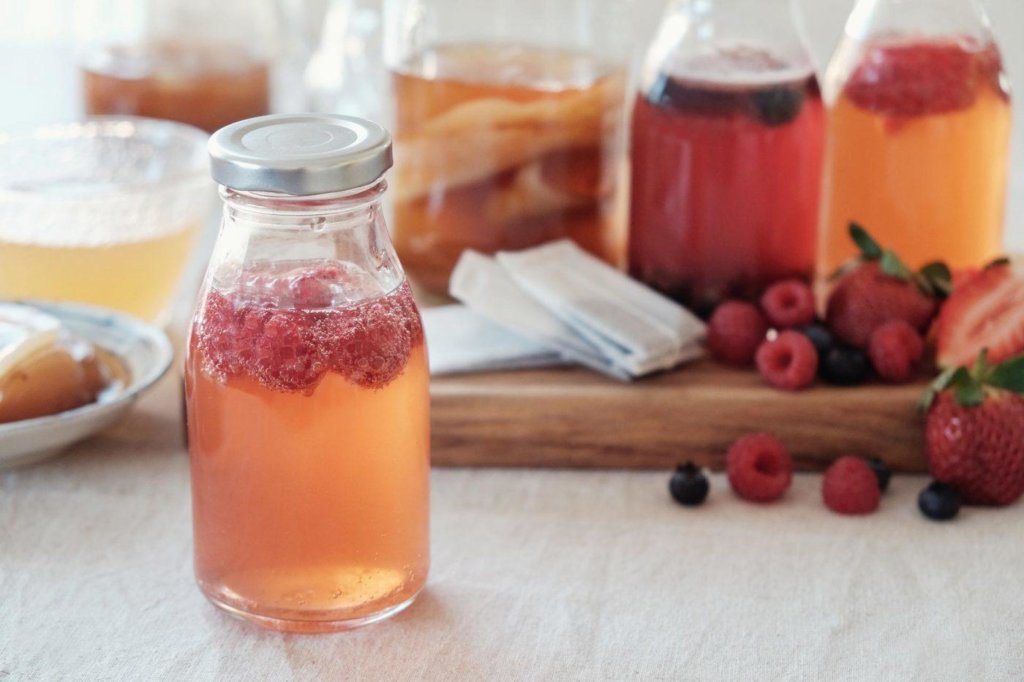
I used to be a huge diet coke girl and, sadly, drank way too much each day with very little water consumption. The carbonation of diet coke, as well as the aspartame, was really damaging to my health. (Source) So I cut it out cold turkey and switched to just water.
But sometimes plain old water gets a little boring, so I started making homemade kombucha.
This was a great alternative because it’s filled with good bacteria for gut health. (Source) You can also flavor it up in so many different ways (my favorites are blueberry, raspberry, or cherry-lime!).
If you don’t want to make your own kombucha, most grocery stores are now selling bottled kombucha. Just do take a look at the sugar content as it shouldn’t have very much at all (and certainly not as much as a soda!).
Coffee & Coffee Creamer
When I was dealing with my stomach issues I actually cut coffee out for six months. But I missed it terribly, so I started researching to figure out what coffee might work well for me. I discovered that even organic coffee still irritated my stomach, but a shade-grown organic coffee I could tolerate.
Not only did I used to drink Folgers coffee, but I also used to dump in a boatload of store-bought creamer. The peppermint mocha coffee creamer that was in stores during the holidays was my absolute favorite. Instead, I now use a collagen-based chocolate protein powder.
Soups
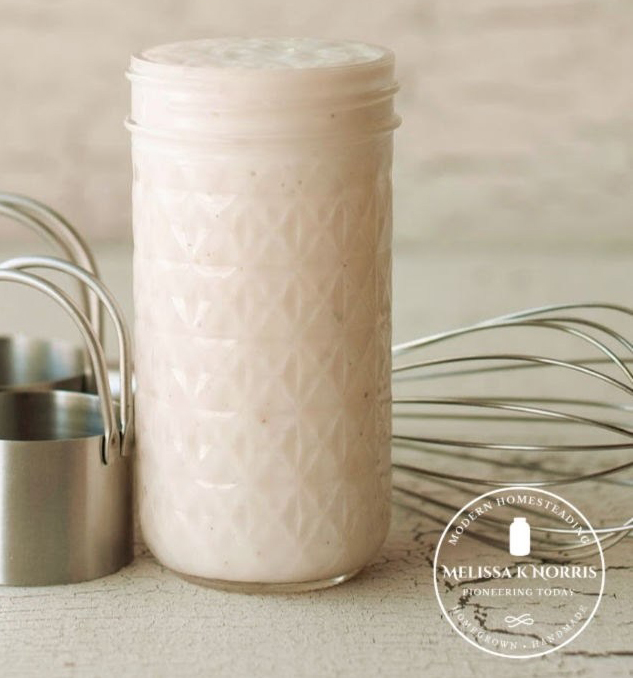
I cut out all cans of cream of condensed soups because I realized I can make it from scratch in under four minutes of time. I’ve tested this recipe using it in the instant pot, slow cooker, stovetop, and oven and it holds up perfectly.
I also grow and preserve all my own tomato products. I preserve a base sauce that can be turned into tomato soup, tomato sauce, marinara, pizza sauce, etc.
I also started making my own bone broth at home because it’s so easy and inexpensive. When compared to the high-quality bone broth from the store, this saves so much money. You can also can your own homemade bone broth easily (or make it, cool it, and freeze it).
These are all the basic pantry staples I ever need for making homemade soups (and so many other recipes).
Mayonnaise
I’m going to keep it real with you on mayonnaise. I actually keep Best Foods Mayo in our home because one thing you’ll realize when making swaps to healthier food items is that it’s possible not all members of your household will be on board changing their favorite ingredients.
In our home, this is my husband with his Best Foods mayo. I prefer not to use it because it’s made from soybean oil and I’ve read studies that say it can possibly mess with estrogen oils. So instead, I like to use the Chosen Foods brand of avocado oil mayonnaise.
If you have my book Hand Made, I have a recipe for making quick and easy homemade mayonnaise in about ten minutes.
Convenience Meals
I love a good homemade macaroni and cheese, made with smoked gouda and extra sharp cheddar cheese, but I do still like to buy some convenience foods that my kids can make on their own without my help. There are just some smarter options such as Annie’s Organic Macaroni & Cheese (though sadly they sold out to a larger corporation).
Eating choices may not always be easy to change, but just know there are options. Sometimes it’s just about making one small step forward in our broken food system, even if there are better choices out there, making one step for the better is a step in the right direction.
I’m curious, what are some ingredients you’ve swapped out for healthier options? Let me know in the comments below!

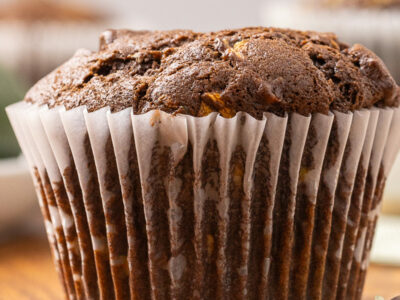
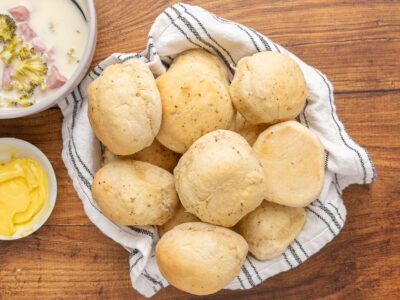
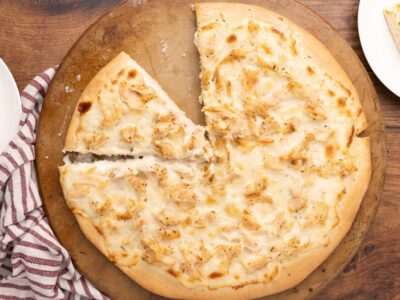






I recently tried https://killakush.com/product/live-rosin-vape-pen-og-kush/ , and I’m absolutely impressed with the quality. The effects were serene, calming, and exactly what I was hoping for. The make of options also allowed me to learn something perfect in the direction of both relaxing evenings and rich days. Indubitably advise in favour of anyone seeking inordinate results!
Great article! I have made some of these changes and am still working on some. I would love your recipe for the “cream of” soups!
Thanks!
I’d like it too.
lol
Thank you for for all the wonderful information! I started screenshotting so many of your recipes and ideas I decided to go to Barnes & Noble and pick up your Hand Made book. They didn’t have it, but they said they’re ordering it for me. (I’m waiting for them because I get a teacher discount there.)
For years my beef soup base was made with mostly discards. There was a time (I am old) when oxtails were considered a waste meat and never cost more than a few cents per pound. Sometimes it was free.
Trimmings from the vegetables that would go into the soup the next day or would be used the day I was making the beef stock for freezing.
Celery tops and bottoms, potato peels, onion peels, carrot peels, and the like. All washed and cut into pieces that would allow maximum extraction of nutrients and taste. Put everything in a large pot and fill with water. Add some bay leaf and boil for several hours, checking occasionally to add more water as necessary.
After cooking let it cool down and remove the meat from the ox tails. Run the rest through cheesecloth or other fine strainer. Add the oxtail meat back to the broth. (I pretty much never try to make true oxtail soup, using only the meat from the oxtails. There just is not enough to satisfy several good eaters.)It is now ready for freezing or refrigerated overnight to make the soup the next day.
As for other swaps, was never big on olive oil. We used butter, Crisco, and lard when I was growing up. After I was grown and on my own and no longer had access to all the fresh foods we used to raise, I began looking for foods that would store long term. I learned about coconut oil and immediately switched to it for most things, along with butter.
Several years ago, when the varietal oils became available I tried a few of them. Most I did not care for, but black walnut oil struck a real cord with me. There was a black walnut tree at the edge of the fence around the property and we gathered literally tons of them. The oil does not add that much taste to waffles, which is what I use it for, but they turn out just right in the small waffle maker I have.
I do some of the others listed, picking up the habit(s) over the years as I became more educated about prepping and the need to maintain my health as best as I can.
Just my opinion.
I’m going a lot of your replacements already. One thing you didn’t mention that I do is make my own peanut butter. I’ve been using store bought dry roasted peanuts but will be adding organic roasted peanuts to my next Azure order!
Great list of swaps! I have done pretty much the same as you! Haven’t gone down the Kombucha trail yet but I should start. I have a book from Israel on making Gazoz – a carbonated non-alcoholic drink. The book is called Gazoz – the Art of Making Magical, Seasonal Sparkling Drinks!
Everything else on your list we have already done but it’s good to have confirmation that we did good 🙂
For some reason I was not able to access your 5 minute bread recipe. I s there another way I can get it?
Thank you!
Great info in this post! We also do the bone broth, organic cane sugar, and organic unbleached flour. We swap peanut butter for almond butter, oat milk for dairy milk (more because of my allergies than health, but there is also an environmental benefit).
For oils, we have made some of the same swaps except we use avocado oil instead of olive oil for cooking. My husband has a doctorate in chemistry specializing in free radicals and antioxidants. He says that olive oil oxidizes (makes lots of free radicals) when heated which makes it very unhealthy for cooking, so we use avocado oil or coconut oil instead, depending on the recipe. He also advocates for cooking with butter in general (though I have a dairy sensitivity) and lard (though we don’t know how to find/make/use it – perhaps we will try your recipe!). Olive oil has enormous health benefits when used raw.
On occasion, we use vegan blocks of butter for recipes where other substitutes don’t work well (like buttercream frosting). I don’t think this is healthier than grass fed butter, however I can’t find anything else that will work that I’m not allergic to… would love some suggestions to get a healthy frosting that is good for piping as I would LOVE to practice my cake decorating skills. I am also struggling with finding a substitute for icing sugar in this case, however these types of food are very rare treats.
Yes, one step at a time!
I really like everything you are sharing and doing to help other’s. I want to get lard, I know it’s much healthier than the other products out there now!
I am senior and not able to do the things you are telling us! I do applaud you!!
My trade-out: I was lactose intolerant until we started getting raw milk from grass-fed cows, and now I can drink all the milk I want and use the cream also.
Thank you so much for the info on the mayo! I didn’t know soybean oil could, “mess with estrogen oils.” In fact, I didn’t know estrogen had an oil!
I found out a long time ago that I’m dairy intolerant, so Nutritional Yeast has become my go-to cheese substitute. I love baked cauliflower dipped in a mayo, nutritional yeast, and chipotle Cholula mix. My fav!!
We are all sensitive to dairy products in my family so we use almond milk and non-dairy cheese substitutes (Daiya cheese is my favorite cheese substitute). I have substituted canned coconut milk for sweetened condensed milk in a recipe.
Me too. I love Almond Pepper Jack Cheese on about everything you bake with regular cheese. It has a nice kick and helps me not miss the regular taste of dairy cheese.
What is the source of collagen in your powder?
Grass-fed beef
Dear Melissa,
I have what’s called Barrett’s esophagus which I have to have biopsies every year. Now my doctor said he could laser it three or four times but I don’t want to be put to sleep that many times. I’m 68 years old and became a widow in September 2021 after 21years. Would all this help me for just one person? I have to take medicine every day for my acid reflux. I have learned not to eat late, no spicy foods, no sodas and my bed raises up for me. I need help.
Sincerely,
Sandra Kee
Hi Sandra,
I don’t have experience with Barrett’s esophagus (they tested me but I was fortunate I didn’t have it). But for me, finding my trigger foods and cutting them out was key to being to come off my medicine and heal. I go into greater detail here https://melissaknorris.com/podcast/how-to-heal-stomach-acid-naturally/
Sandra, check out Forks over knives website. I believe there was a success story about Barrett’s esophagus being managed with Whole Food Plant Based lifestyle. Hope this helps!
Love all your info. We have been doing a few swaps already, but will be working at doing more. Thank you for sharing.
Great post! I can’t wait to try the “cream of” soup base. It makes me cringe buying good cream of soups at such a large cost. (I mean, $2.00 for a small 6 oz can of creamed soup? ah, I don’t use it often…)